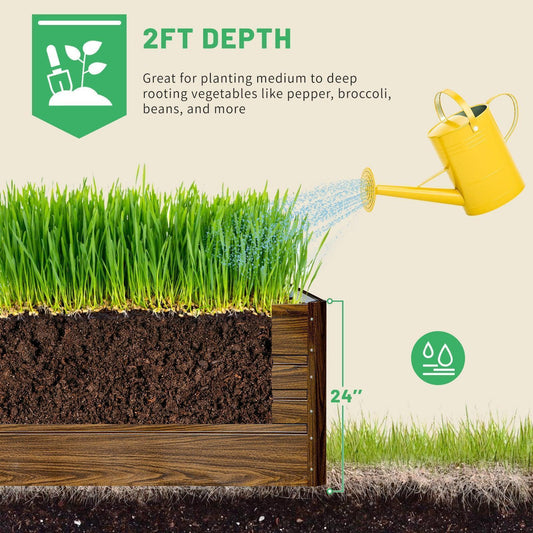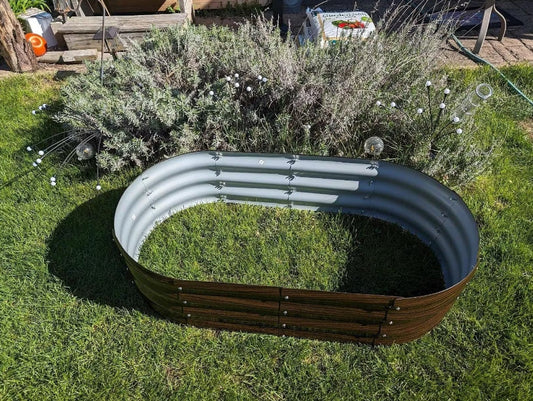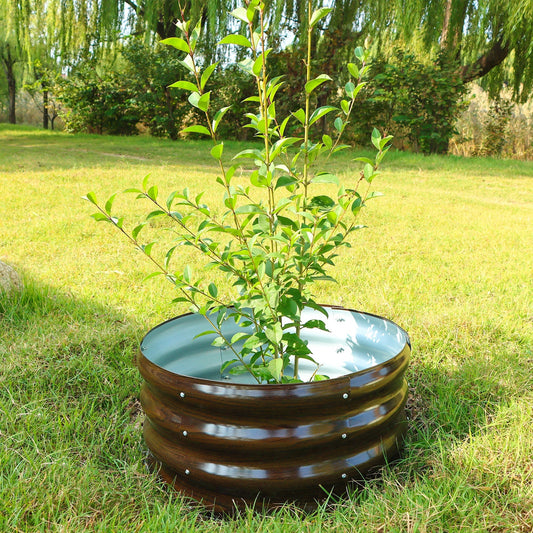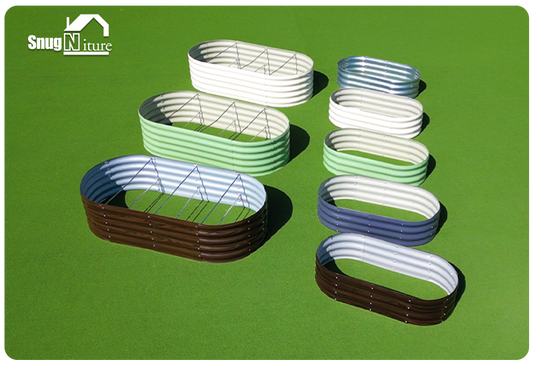Should You Invest in Raised Garden Beds This Year
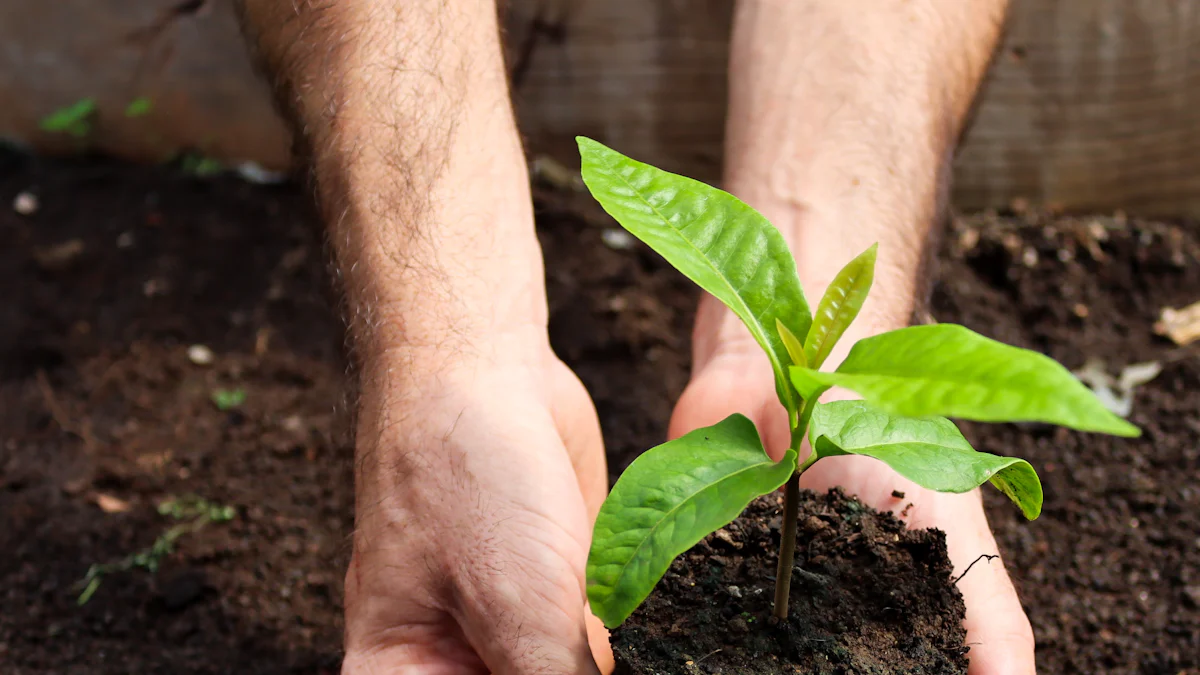
Have you ever thought about upgrading your garden? Raised garden beds might be just what you need. They offer better control over soil quality, improved drainage, and less hassle when it comes to maintenance. Sure, they come with some upfront costs, but the benefits often make them worth it. For example, a DIY wooden bed can cost $25 to $50 per square foot, while durable steel options average around $31 per square foot. Although traditional gardening is cheaper initially, raised beds save you time and effort in the long run. Plus, they make gardening more enjoyable and accessible.
Benefits of Raised Garden Beds
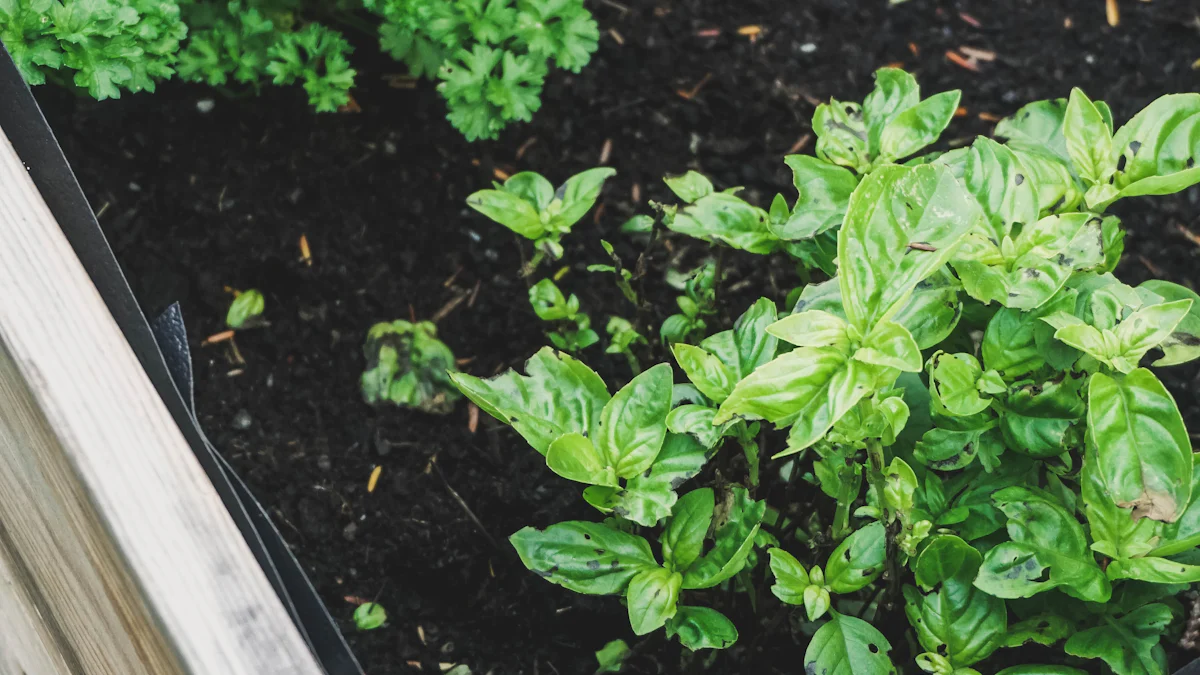
Improved Soil Control
Customize soil composition for specific plants
With raised garden beds, you get to control the soil like never before. You can tailor the soil mix to suit the needs of your plants. Whether you're growing vegetables, flowers, or herbs, you can add compost, sand, or organic matter to create the perfect environment for them to thrive. This level of customization is hard to achieve with in-ground gardening.
Better drainage and reduced soil compaction
Raised garden beds are a game-changer when it comes to drainage. Their elevated design prevents waterlogging, which can suffocate plant roots. Instead, water drains efficiently, giving your plants access to oxygen and nutrients without oversaturation. This setup also reduces soil compaction, so roots can grow freely and absorb nutrients more effectively. If you live in an area with heavy rainfall or poor soil drainage, raised beds can make all the difference.
Easier Maintenance
Reduced bending and kneeling for planting and weeding
Gardening shouldn't leave you with an aching back. SnugNiture 17" Tall Raised garden beds bring your plants closer to you, so you don't have to bend or kneel as much. This ergonomic design makes gardening more comfortable, especially for older adults or anyone with physical limitations. You can even use long-handled tools to maintain a straight back while working, reducing strain on your spine and joints.
Simplified weed and pest management
Weeds and pests are less of a headache with raised garden beds. The defined borders make it easier to spot and remove weeds before they spread. Plus, pests like slugs, snails, and aphids are easier to manage since you can monitor your plants more closely. Raised beds also let you use protective covers or barriers to keep unwanted critters out.
Enhanced Aesthetics
Neat and organized garden appearance
Raised garden beds give your outdoor space a polished, organized look. Their clean lines and defined edges create a sense of order, making your garden more visually appealing. You can arrange them in rows, clusters, or even unique shapes like circles or L-shapes to add character to your yard.
Versatile designs to match your outdoor space
The design possibilities are endless. You can choose from various materials, heights, and shapes to match your garden's style. Tiered beds add depth and dimension, while colorful planters or vibrant plants can make your garden pop. Want to take it up a notch? Add string lights or small sculptures to create a cozy, inviting atmosphere.
Extended Growing Season
Soil warms up faster in spring
Have you ever noticed how spring planting can feel like a waiting game? With raised garden beds, you can get a head start. The elevated design allows the soil to warm up faster compared to traditional in-ground gardens. This means you can plant earlier in the season without worrying about cold soil stunting your plants. Plus, if you live in a cooler climate, this feature can make a huge difference in how quickly your garden comes to life.
Raised beds also help protect your plants from unexpected cold snaps. You can easily add frost cloth or floating row covers to shield your crops during those unpredictable early spring nights. These simple additions can give your plants the extra warmth they need to thrive.
Better insulation for plants in colder months
When the temperatures drop, keeping your plants cozy becomes a priority. Raised garden beds make this easier by offering better insulation for the soil. Adding a thick layer of mulch around your plants helps retain moisture and keeps the soil temperature stable. This creates a healthier environment for your plant roots, even during chilly weather.
You can also use cold frames or protective coverings to extend your growing season further. These tools work perfectly with raised beds, giving your plants a little extra time to grow before winter fully sets in. Whether you're growing vegetables or flowers, this added insulation can help you enjoy your garden for longer.
Sustainability and Eco-Friendliness
Use of eco-friendly materials like Snugniture's Modular Metal Raised Garden Beds
If you're looking for a sustainable gardening option, raised garden beds are a fantastic choice. Many are made from eco-friendly materials like cedar, recycled pallets, or innovative options like Snugniture's Modular Metal Raised Garden Beds. These beds are crafted from durable, non-toxic materials that are built to last. They’re not just good for your garden—they’re good for the planet too.
Snugniture’s modular design also makes it easy to customize your garden layout while staying environmentally conscious. By choosing products like these, you’re investing in a greener future for both your garden and the Earth.
Contribution to environmental efforts, such as tree planting initiatives
Raised garden beds don’t just benefit your plants—they can also help the environment. For example, Snugniture pledges to donate 1% of sales to tree planting initiatives. This means every purchase contributes to reforestation efforts, helping to combat climate change.
Additionally, raised beds promote sustainable gardening practices. They allow for precise watering at the root level, reducing water waste. By improving soil quality and extending the growing season, they also help lower your garden’s overall carbon footprint. Choosing raised beds is a small step that can make a big impact on the environment.
Drawbacks of Raised Garden Beds
Higher Initial Costs
Expense of materials like wood, metal, or stone
Building raised garden beds can be pricey, especially when you consider the materials. Whether you choose wood, metal, or stone, the costs can add up quickly. For example, a metal bed kit might cost around $143.99, while wooden options can range from $95 to over $200 depending on the type of wood and size. Here's a quick breakdown of potential costs:
Material |
Cost |
Total |
|---|---|---|
Composite Deck boards |
$4.78/lfb |
$114.68 |
Metal bed Kit |
$87.99 |
$176.71 |
Landscape block |
$6.54/lfb |
$236.95 |
You’ll also need to factor in soil and compost, which can cost around $2.77 per cubic foot. These expenses make raised beds a bigger upfront investment compared to traditional gardening.
Additional costs for soil and compost
Filling your raised beds with quality soil is essential, but it’s not cheap. Depending on the size of your bed, you might need several cubic feet of soil, which can cost upwards of $88.72. Compost and other soil amendments add to the expense. While these costs improve plant health, they can strain your budget initially.
Maintenance Requirements
Potential for wood rot or material wear over time
Raised beds require ongoing care to stay in good shape. Wooden beds, for instance, are prone to rot, especially if exposed to moisture. Even treated wood can degrade over time. Metal beds last longer but may show signs of wear or corrosion in harsh climates. Regular inspections and occasional repairs are necessary to keep your beds functional.
Regular soil replenishment and care
The soil in raised beds doesn’t last forever. Over time, it loses nutrients and compacts, requiring replenishment. Adding compost or fresh soil each season is crucial for maintaining plant health. Mulching can help reduce weed growth and retain moisture, but it’s another task to add to your gardening routine. Without proper care, your plants might not thrive as expected.
Tip: To minimize maintenance, consider using durable materials like metal and adding mulch to retain soil quality.
Space and Design Limitations
May not be suitable for small or irregularly shaped yards
Raised beds take up a defined amount of space, which can be a challenge if your yard is small or oddly shaped. Most beds are around 8 feet long and 4 feet wide, making them less flexible than traditional gardens. If space is tight, you might struggle to fit them in without compromising accessibility or sunlight exposure.
Limited depth for deep-rooted plants
Deep-rooted plants like carrots or parsnips may not thrive in standard raised beds. Most beds are 6 to 12 inches deep, which isn’t enough for plants needing extensive root systems. You can opt for deeper beds or amend the soil to improve conditions, but this adds to the cost and effort. Choosing plants that suit the available depth is often the easiest solution.
Note: If you’re growing deep-rooted plants, consider raised beds with a depth of at least 18 inches for better results.
Factors to Consider Before Investing
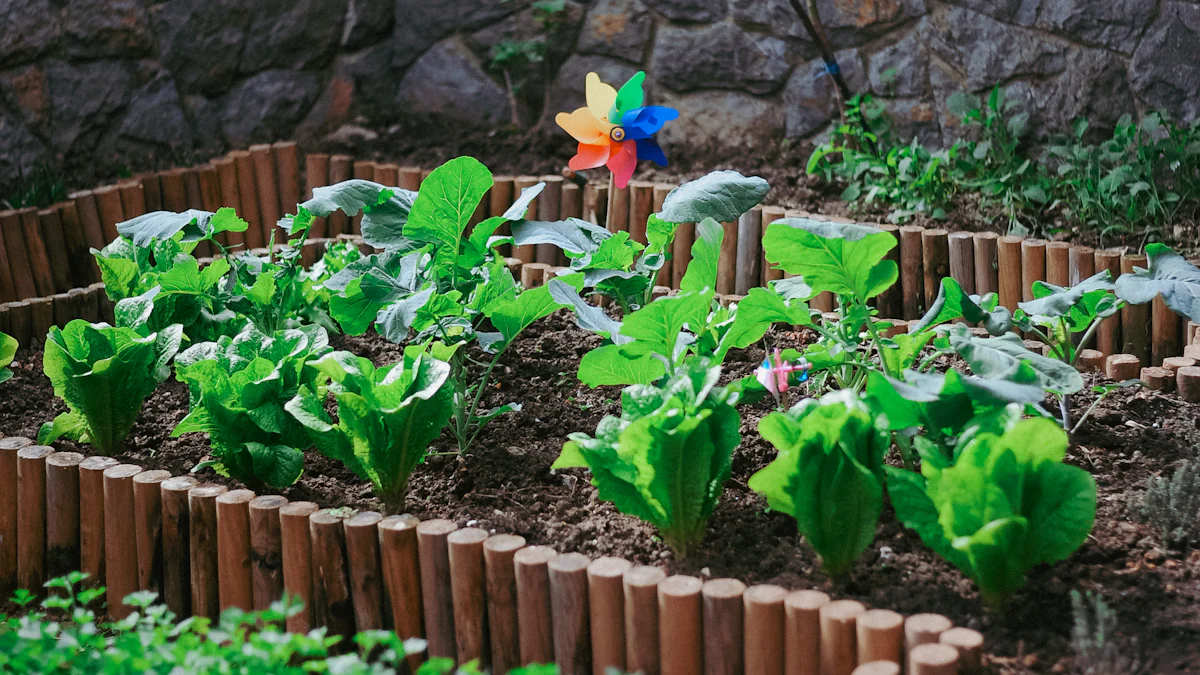
Your Budget
Assess upfront costs versus long-term benefits
Before diving into raised garden beds, think about your budget. While the initial costs might seem high, the long-term benefits often outweigh them. A well-built raised bed improves soil control, drainage, and weed management, saving you time and effort over the years. Materials like cedar or metal may cost more upfront, but their durability makes them a smart investment.
Explore DIY options or affordable products like SnugNiture's Modular Metal Raised Garden Beds
If you're on a tight budget, DIY options can help you save money. Repurposed materials like wooden pallets, cinder blocks, or even old furniture can be transformed into functional raised beds. Cedar fence posts, for example, cost as little as $3.15 each, making them an affordable choice. Alternatively, Snugniture's Modular Metal Raised Garden Beds offer a cost-effective solution with durability and sustainability in mind. These beds combine affordability with quality, making them a great option for gardeners of all levels.
Gardening Goals
Determine if raised beds align with your planting needs
What do you want to grow? Raised garden beds work well for vegetables, herbs, and flowers. They allow you to concentrate soil amendments, leading to healthier plants and higher yields. If you're growing sprawling plants like zucchini or pumpkins, ensure you have enough space. For larger plants like tomatoes, consider adding trellises or cages for support.
Consider whether you prioritize aesthetics or functionality
Raised beds can be both practical and beautiful. If you value aesthetics, choose materials and designs that complement your outdoor space. For functionality, focus on depth and size to meet your plants' needs. Whether you're aiming for a productive vegetable garden or a stunning flower display, raised beds can help you achieve your goals.
Available Space
Evaluate the size and layout of your garden area
Take a good look at your garden. Do you have enough room for raised beds? Most beds are 4 feet wide, which allows you to reach the center without stepping on the soil. Leave at least 3 feet of pathway space around each bed for easy access. If your yard is small, modular designs like Snugniture's can help you maximize your space.
Ensure proper sunlight and accessibility for raised beds
Sunlight is crucial for plant growth. Choose a spot that gets at least 6-8 hours of sunlight daily. Position your beds on the south side of tall structures to avoid shade. Accessibility is just as important. Make sure you can easily reach your beds without excessive walking or carrying heavy tools. A well-planned layout ensures your garden is both productive and enjoyable.
Climate and Soil Conditions
Raised beds can help in areas with poor soil quality
If your garden soil isn’t ideal, raised beds can be a lifesaver. They let you bypass poor soil conditions entirely by starting fresh with a nutrient-rich mix. You can fill them with a blend of soil and compost, creating the perfect environment for your plants to thrive. This approach improves soil structure and fertility, which is hard to achieve with traditional gardening.
Raised beds also shine in areas with poor drainage. Their elevated design prevents waterlogging, even in heavy rainfall. This means your plants won’t drown or suffer from root rot. Plus, you can easily amend the soil to suit specific crops. Whether you’re dealing with clay-heavy soil or sandy patches, raised beds give you the flexibility to grow what you want.
Here’s why they’re a great choice for challenging soil conditions:
Better drainage keeps roots healthy and prevents water buildup.
Easier to add compost or nutrients for improved fertility.
Regular soil testing helps you maintain the right balance for your plants.
With raised beds, you’re in control. You can turn even the most unsuitable yard into a productive garden.
Consider how your local climate affects plant growth
Your climate plays a big role in how well your garden grows. Raised beds can help you adapt to local conditions. In colder areas, the soil in raised beds warms up faster in spring. This gives you a head start on planting and extends your growing season. If you live somewhere with short summers, this can make a huge difference.
In hot climates, raised beds make it easier to manage soil moisture. You can add mulch to keep the soil cool and prevent it from drying out too quickly. For regions with heavy rainfall, the improved drainage of raised beds ensures your plants don’t get waterlogged.
Here are some tips to make the most of your raised beds in any climate:
Use mulch to regulate soil temperature and retain moisture.
Add frost covers in colder months to protect your plants.
Position your beds to maximize sunlight in cooler regions.
By tailoring your gardening practices to your climate, you can create a thriving garden no matter where you live. Raised beds give you the tools to overcome challenges and grow with confidence.
Raised garden beds bring a host of benefits to your gardening experience. They let you control soil quality, improve drainage, and reduce physical strain, making gardening more enjoyable and productive. Plus, plants in raised beds often yield two to three times more produce than traditional gardens. While the upfront costs might seem high, the long-term advantages—like extended growing seasons and healthier plants—make them a smart investment.
If you’re ready to take your garden to the next level, consider SnugNiture's Modular Metal Raised Garden Beds. Their durability, eco-friendly design, and customizable options make them a standout choice for gardeners of all levels. With these beds, you’ll enjoy a thriving garden while contributing to a greener planet.



